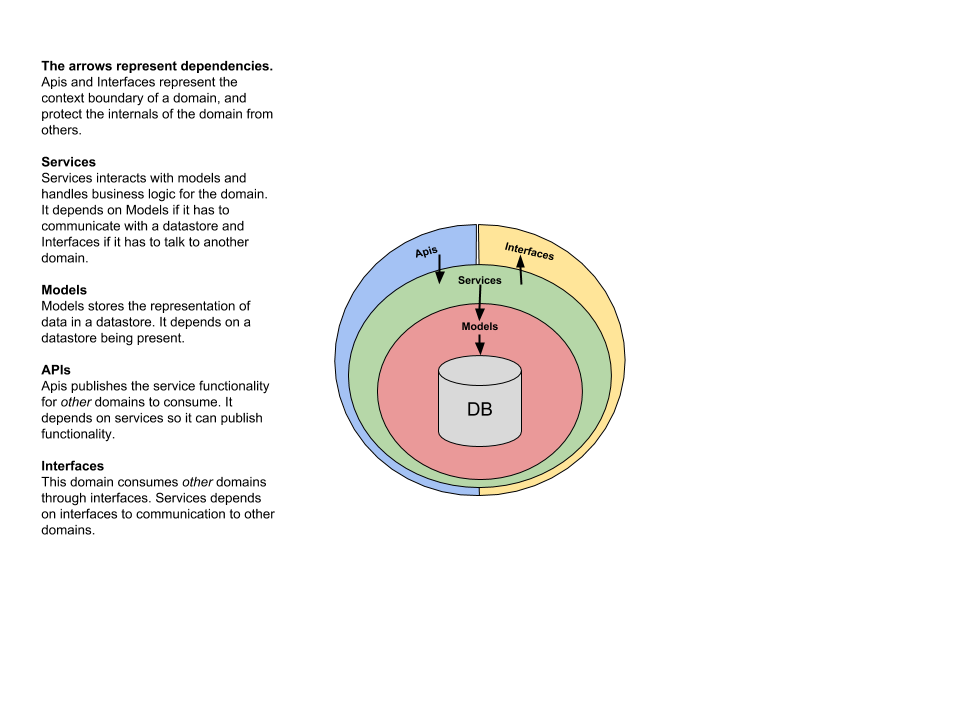Visualisation

File structure
- A domain must use the following file structure:
- apis.py - Public functions and access points, presentation logic.
- interfaces.py - Integrations with other domains or external services.
- models.py - Object models and storage, simple information logic.
- services.py - coordination and transactional logic.
In addition, any existing files from a standard Django app are still allowed, such as urls.py, apps.py and migrations/*.
Views.pyin Django's pattern is explicitly not allowed in this styleguide.
We only focus on API-based applications. Most logic that used to live in Django's views.py would now be separated into APIs and Services.
- You can mask one of the required files as a directory for better file organisation. For example, you might want to split
apis.pyfile into this structure:
apis/
__init__.py
rest.py
graphql.py
Your __init__.py file in this directory can import the local files:
# apis/__init__.py
from .rest import * # noqa
from .graphql import * # noqa
Then, any other file can import from apis like so:
# example.py
from domain.apis import Foo
This keeps namespaces tidy and does not leak domain details.
-
A domain does not need to have all these files if it is not using them. For example - a domain that just coordinates API calls to other domains does not need to have Models as it is probably not storing anything in a datastore.
-
A domain can have additional files when it makes sense (such as
utils.pyorenums.pyorserializers.py) to separate out parts of the code that aren't covered by the styleguide pattern.
Read more about the files in the files section.
Absolute or Relative imports?
The ruling for absolute or relative imports is as follows:
- When importing files within a domain, you must use relative imports.
- When importing other domains in the same project, you must use absolute imports.
- When importing domains in tests, you should use absolute imports.
- When importing third-party packages you should use absolute imports.
TL;DR - relative imports inside a domain, absolute for everything else!
With this ruling domains are easy to package and move around. When it comes time to move it into it's own project; tidying up imports will be one less thing you have to do.
Which logic lives where?
It's common in programming to end up confused about what type of logic should live where.
There are many cases where it's difficult to decide, and the best advice is to pick a pattern and stick to it, but for simpler things, this guide emphasises the following:
APIs
Logic about presentation.
If you ask: "Where should I show this data to the user?" or "Where do I define the API schema?"
Services
Logic around coordination and transactions.
If you ask: "Where do I coordinate updating many models in one domain?" or "Where do I dispatch a single action out to other domains?"
Models
Logic around information.
If you ask: "Where can I store this data?" or "Where can I do any post/pre-save actions?"
Interfaces
Logic for handling the transformation of data from other domains.
If you ask: "Where shall I connect to another domain?" or "How do I change the data format for another domain?"